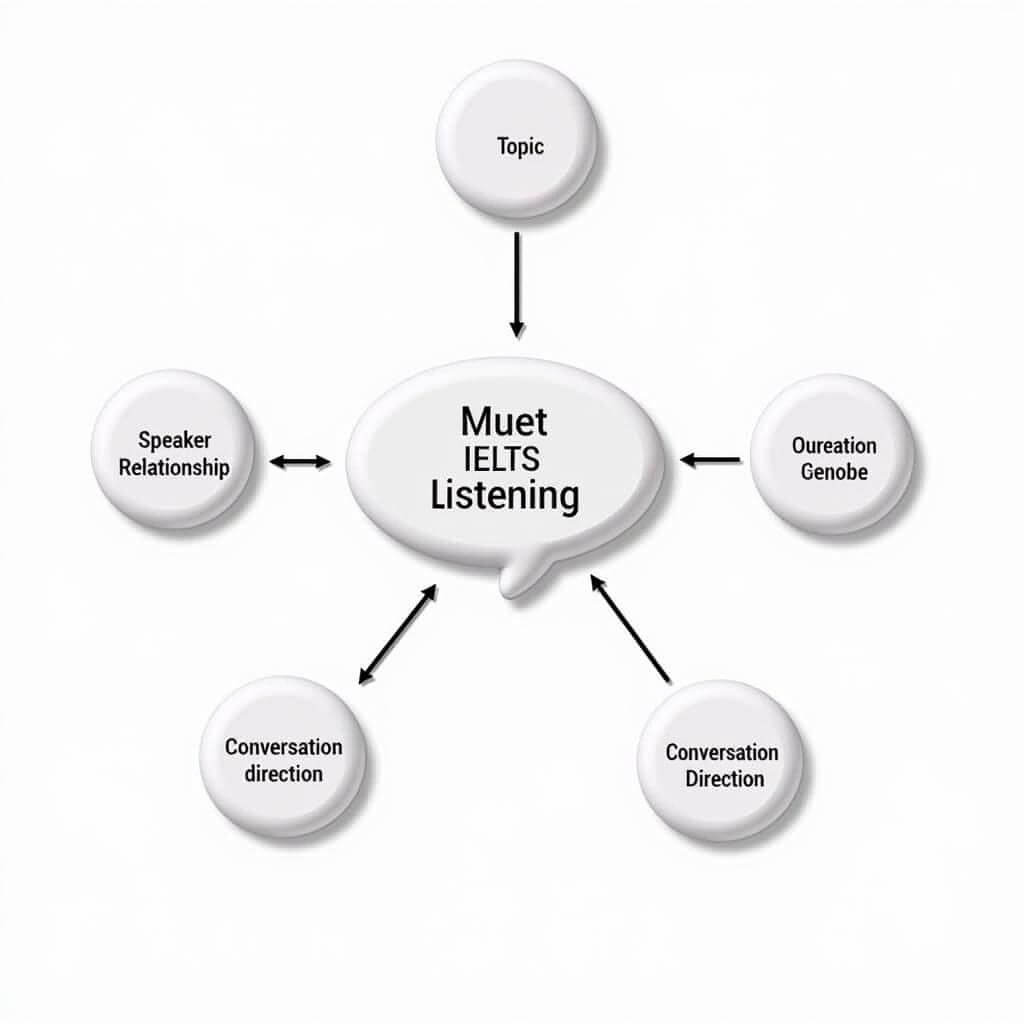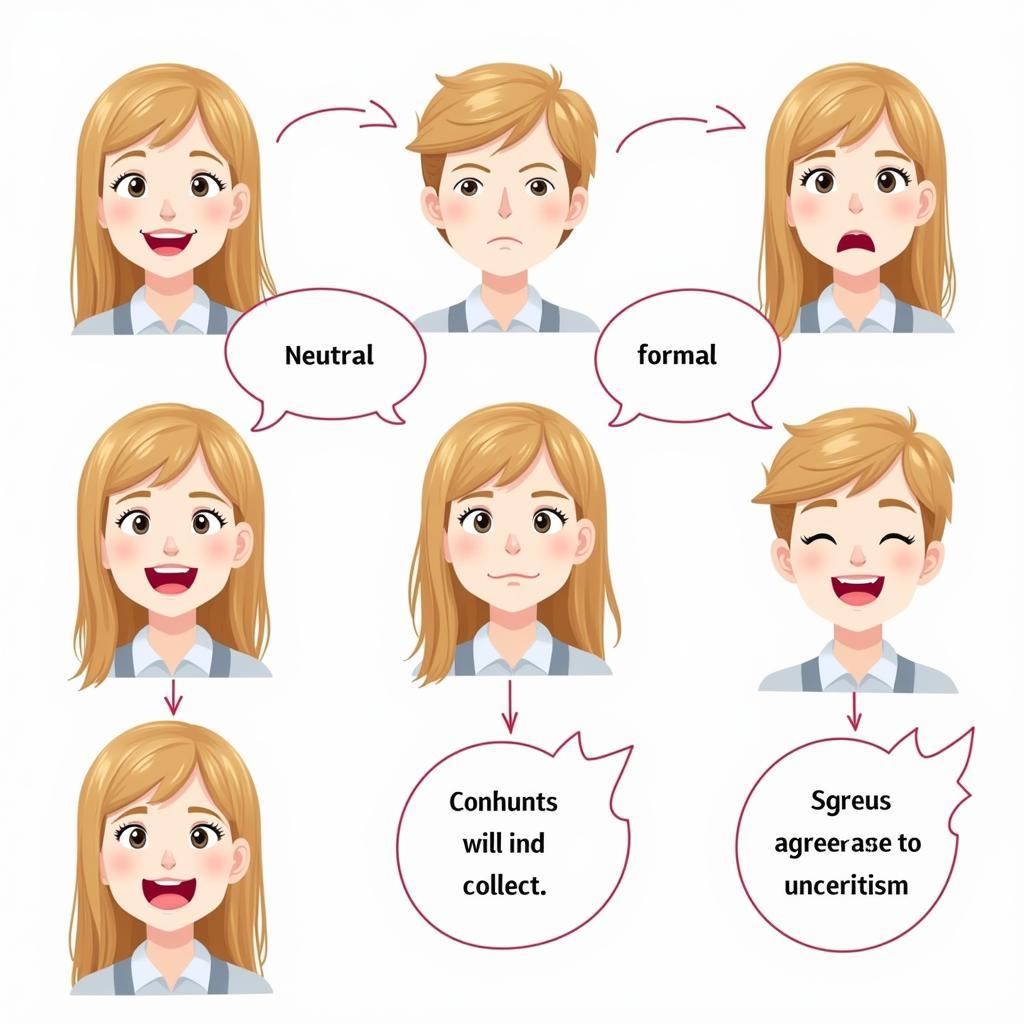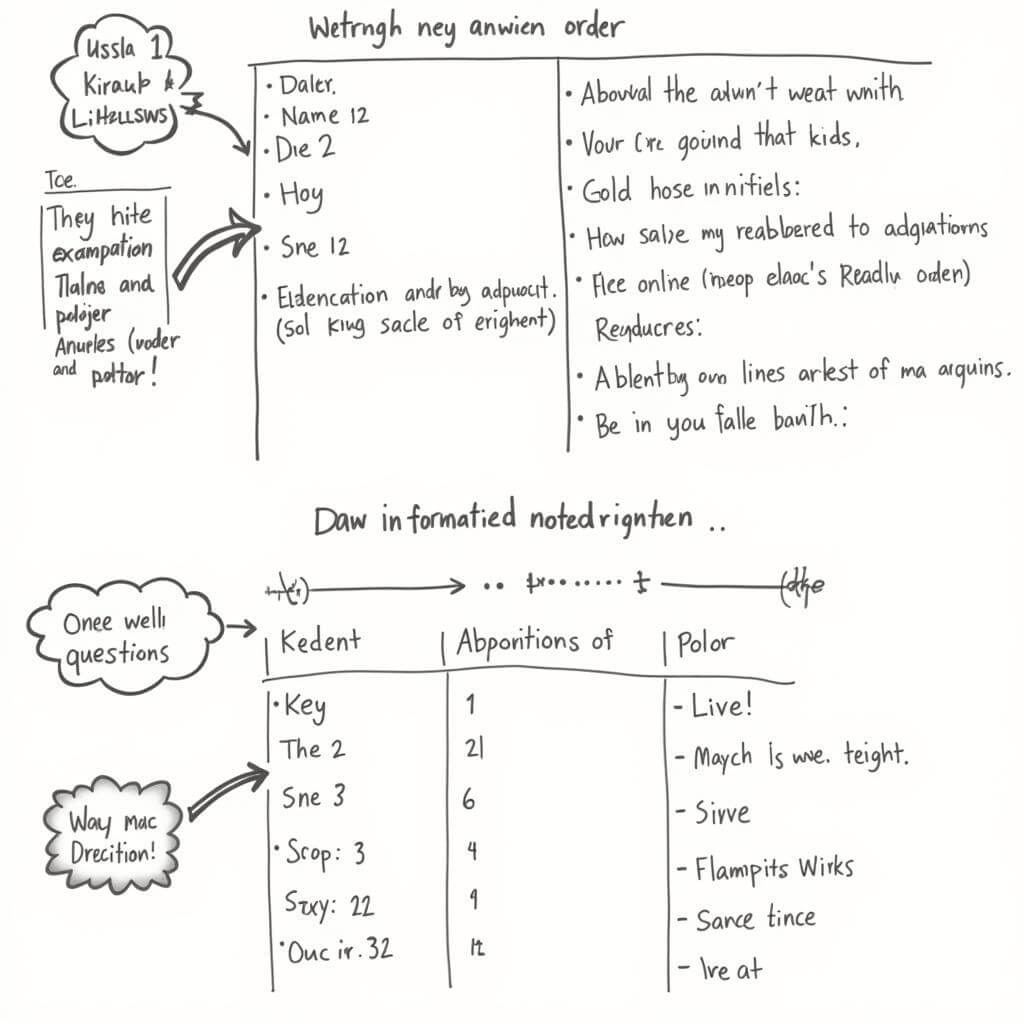In IELTS Listening, one of the most crucial skills is the ability to identify and interpret tone changes. This subtle yet powerful aspect of communication can significantly impact your understanding and, consequently, your score. As an experienced IELTS instructor, I’ve seen countless students struggle with this aspect. Let’s dive into how you can master the art of focusing on tone changes efficiently.
Table Of Contents
- Understanding the Importance of Tone in IELTS Listening
- Why Tone Matters in IELTS Listening
- Strategies for Efficiently Focusing on Tone Changes
- 1. Familiarize Yourself with Different Tones
- 2. Pay Attention to Vocal Cues
- 3. Context is King
- 4. Practice Active Prediction
- 5. Develop Your Emotional Intelligence
- 6. Use Visual Cues in Video Practice
- Common Tone Changes to Look Out For
- Practical Exercises for Improving Tone Recognition
- Integrating Tone Recognition with Other Listening Skills
- Common Pitfalls to Avoid
- Conclusion
- Frequently Asked Questions
- How often do tone changes appear in the IELTS Listening test?
- Can focusing too much on tone changes distract from understanding content?
- Are there specific sections of the IELTS Listening test where tone changes are more important?
- How can I improve my ability to detect sarcasm or irony in the IELTS Listening test?
- Is it necessary to understand every tone change to score well in IELTS Listening?
- How does cultural background affect the interpretation of tone changes?
- Can automated IELTS preparation tools help in learning to recognize tone changes?
Understanding the Importance of Tone in IELTS Listening
Tone changes in spoken English can convey a wealth of information beyond the literal meaning of words. In the IELTS Listening test, these nuances are often key to answering questions correctly. By focusing on specific details, including tone, you’ll be better equipped to grasp the full context of what’s being said.
Why Tone Matters in IELTS Listening
- Reveals speaker’s attitude
- Indicates agreement or disagreement
- Conveys emotions and intentions
- Helps in understanding implied meanings
Understanding these aspects can make the difference between a good and an excellent score in your IELTS Listening test.
Strategies for Efficiently Focusing on Tone Changes
To effectively pick up on tone changes, you need to develop a keen ear and employ specific strategies. Here are some techniques that have proven successful for my students:
1. Familiarize Yourself with Different Tones
Before diving into practice tests, spend time listening to various English accents and identifying different tones. This foundational step is crucial for focusing on specific speaker details.
- Listen to podcasts, news broadcasts, and casual conversations
- Try to identify emotions like excitement, skepticism, or sarcasm
- Practice with audio materials that feature diverse accents and speaking styles
2. Pay Attention to Vocal Cues
Speakers often use vocal cues to indicate shifts in tone. By focusing on speaker emphasis, you can catch these subtle changes:
- Changes in pitch (higher or lower voice)
- Variations in speed (speaking faster or slower)
- Alterations in volume (speaking louder or softer)
- Pauses or hesitations
“The key to mastering tone changes is to listen not just to what is said, but how it’s said,” says Dr. Emma Thompson, a renowned IELTS examiner.
3. Context is King
Understanding the context of a conversation is vital for interpreting tone changes correctly. Always keep the big picture in mind while listening.
- Pay attention to the topic being discussed
- Consider the relationship between speakers
- Note any shift in the conversation’s direction
 Importance of Context in IELTS Listening
Importance of Context in IELTS Listening
4. Practice Active Prediction
As you listen, try to anticipate potential tone changes based on the conversation’s flow. This technique of focusing on key speaker phrases can help you stay ahead:
- Predict possible reactions to what’s being said
- Anticipate follow-up questions or responses
- Look out for transitional phrases that might indicate a shift in tone
5. Develop Your Emotional Intelligence
Enhancing your emotional intelligence can significantly improve your ability to detect and interpret tone changes:
- Practice empathy while listening
- Try to put yourself in the speaker’s shoes
- Reflect on how you would feel in similar situations
6. Use Visual Cues in Video Practice
While the actual IELTS test doesn’t include video, practicing with visual cues can help train your ear to pick up on tone changes more effectively:
- Watch English-language TV shows or movies with subtitles
- Observe body language and facial expressions
- Note how visual cues align with vocal tone changes
Common Tone Changes to Look Out For
Being aware of common tone shifts can help you focus more efficiently during the test:
- Neutral to enthusiastic
- Formal to informal
- Serious to humorous
- Confident to uncertain
- Agreeable to skeptical
 Common Tone Changes in IELTS Listening
Common Tone Changes in IELTS Listening
Practical Exercises for Improving Tone Recognition
To sharpen your skills in focusing on tone changes efficiently, try these exercises:
-
Tone Matching Game: Listen to short audio clips and match them with the correct tone from a list of options.
-
Tone Change Spotting: Practice with longer recordings, raising your hand or noting down timestamps when you hear a tone change.
-
Emotion Labeling: Listen to conversations and label the emotions expressed by each speaker throughout the dialogue.
-
Tone Transition Analysis: After listening to a conversation, write a brief analysis of how and why the speakers’ tones changed throughout the interaction.
-
Role-Playing: Practice conversations with a study partner, intentionally incorporating tone changes and discussing your observations afterward.
“Regular practice with these exercises can dramatically improve your ability to detect and interpret tone changes,” notes Sarah Chen, IELTS preparation expert.
Integrating Tone Recognition with Other Listening Skills
While focusing on tone changes is crucial, it’s important to balance this skill with other aspects of IELTS Listening. Here’s how you can integrate tone recognition with other key listening strategies:
- Combine tone analysis with focusing on specific details to get a comprehensive understanding of the audio.
- Use your improved tone recognition skills to enhance your note-taking technique.
- Apply your understanding of tone changes to better predict upcoming information in the listening passage.
Common Pitfalls to Avoid
In your journey to master tone changes in IELTS Listening, be wary of these common mistakes:
- Overanalyzing every word at the expense of overall comprehension
- Ignoring cultural context that might influence tone
- Mistaking accent variations for tone changes
- Focusing solely on tone at the expense of factual content
- Neglecting to practice with a variety of accents and speaking styles
Conclusion
Mastering the skill of focusing on tone changes efficiently is a game-changer for your IELTS Listening performance. By employing the strategies and exercises outlined above, you’ll develop a more nuanced understanding of spoken English, leading to improved scores and greater confidence in your listening abilities. Remember, consistent practice and a keen ear for emotional subtleties are your best tools in conquering this aspect of the IELTS Listening test.
Frequently Asked Questions
How often do tone changes appear in the IELTS Listening test?
Tone changes are prevalent throughout the IELTS Listening test, appearing in various sections. While their frequency can vary, you can expect to encounter multiple instances in each listening passage.
Can focusing too much on tone changes distract from understanding content?
While it’s important to be aware of tone, it shouldn’t come at the expense of comprehending the content. Balance is key. Practice integrating tone recognition with overall listening comprehension.
Are there specific sections of the IELTS Listening test where tone changes are more important?
Tone changes can be crucial in all sections, but they’re often particularly significant in conversation and discussion-based parts of the test, especially in Sections 3 and 4.
How can I improve my ability to detect sarcasm or irony in the IELTS Listening test?
Practice listening to native English speakers in various contexts, particularly in casual conversations or comedy shows where sarcasm and irony are more common. Pay attention to the mismatch between words and tone.
Is it necessary to understand every tone change to score well in IELTS Listening?
While understanding tone changes is important, it’s not necessary to catch every single one. Focus on major shifts that impact the meaning or context of the conversation.
How does cultural background affect the interpretation of tone changes?
Cultural background can significantly influence how tone is used and interpreted. Familiarize yourself with Western communication styles, as these are most common in IELTS tests.
Can automated IELTS preparation tools help in learning to recognize tone changes?
While automated tools can be helpful for general practice, they may not fully capture the nuances of tone changes. It’s best to combine these with authentic listening materials and human interaction for a well-rounded preparation.


